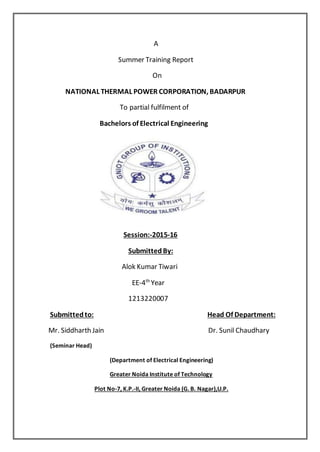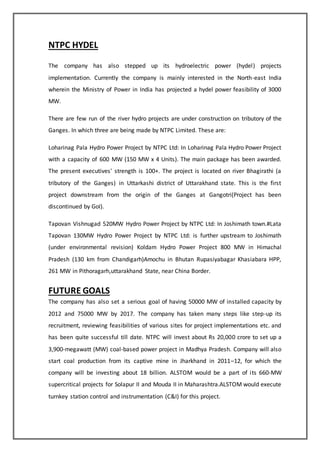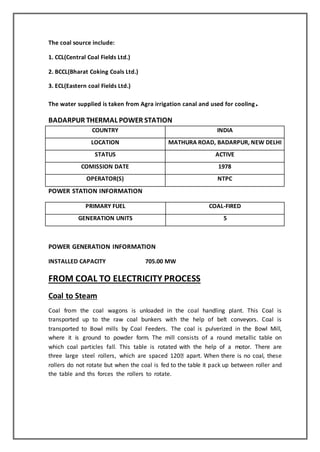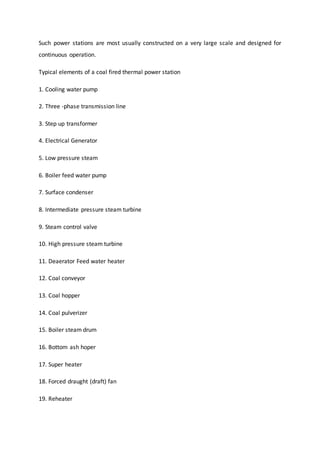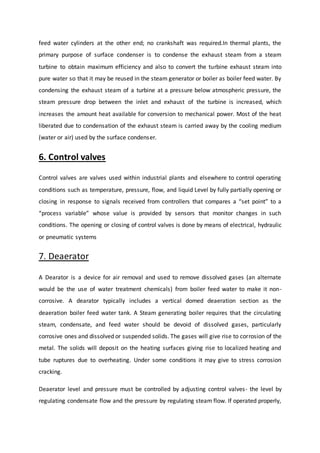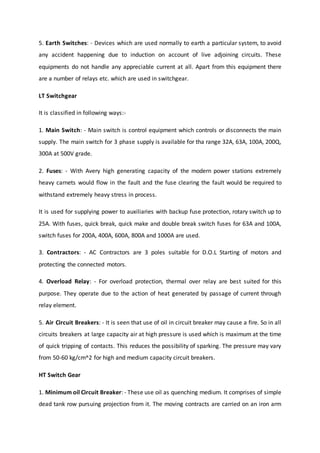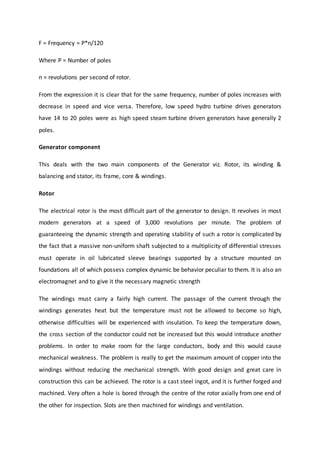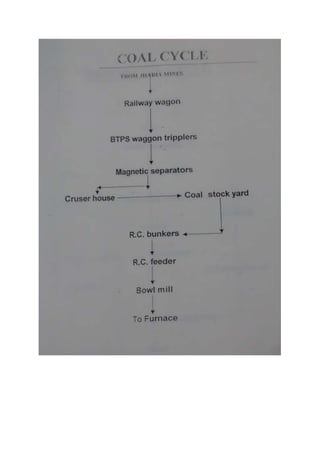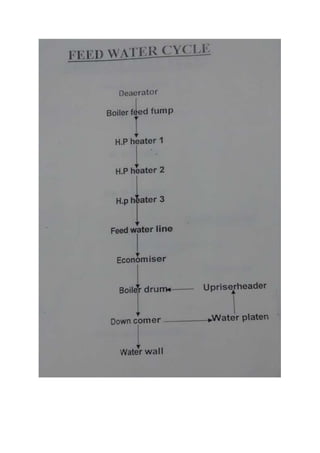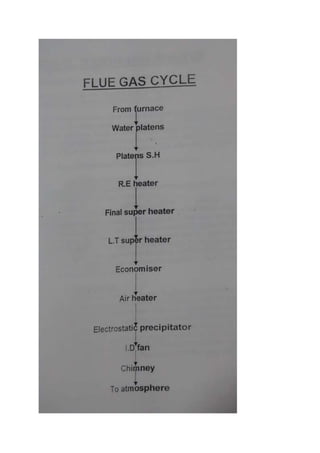The document is a summer training report by Alok Kumar Tiwari on his experience at the National Thermal Power Corporation (NTPC) from June to July 2015, where he gained knowledge in various departments related to power generation. NTPC is India's largest power generating company, established in 1975, specializing in the engineering, construction, and operation of power plants while also emphasizing environmental sustainability. It aims to expand its capacity significantly by 2017 and engages in initiatives for ecological preservation and socio-economic improvement in affected communities.
